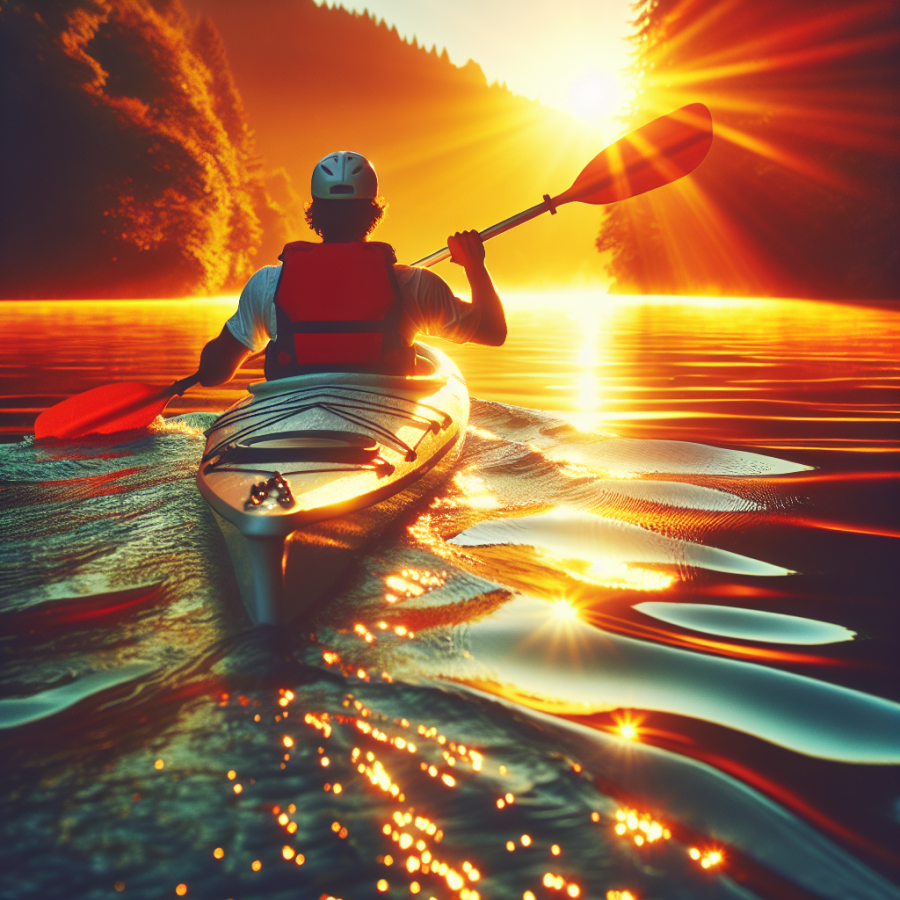Mastering the Fundamentals of Kayaking for Beginners
Kayaking can be an exhilarating way of exploring the outdoors, whether you're gliding over calm lake waters or battling against the white-water rapids. Nevertheless, to fully immerse into the thrill of this water sport, you should master its fundamentals. We'll delve into the basics of kayaking and equip beginners with essential skills and knowledge required to turn a paddle into an incredible outdoor adventure.
Understanding the Basics of Kayaking Equipment
Familiarizing yourself with the basics of kayaking equipment is the first step towards mastering this sport. The most critical kayaking kit is the kayak itself, and they come in various types designed for different water bodies and kayaking styles. There are recreational kayaks, touring kayaks, and specialized ones for white-water rocking and sea kayaking.
The paddle is another essential piece of equipment where its size and design can significantly influence your paddling efficiency and comfort on the water. Familiarize yourself with other pieces of kayaking gear such as the spray deck, life jacket, helmet and other safety equipment.
Learning Key Kayaking Skills
Kayaking involves common paddling techniques for forward, backward and sideways movement, turning and stopping. The forward stroke is the most fundamental move, and getting your technique right can save you energy and keep you in a straight line. The reverse stroke is essential for backing up, while the sweep stroke helps in turning your kayak.
Mastering The Art of Capsize Recovery
Although falling into the water is not something most new kayakers look forward to, it is essential to learn how to recover from a capsize. Wet exit is the simplest type of capsize recovery where you exit the kayak after capsizing. A more advanced recovery technique is the Eskimo roll, which involves righting your kayak without leaving it.
Understanding Safety and Navigation
Kayaking can lead you into isolated and sometimes dangerous environments. Having the basics of safety and navigation skills is crucial. This includes understanding weather and water conditions, using essential navigation tools, and knowing how to call for help in emergencies. Always remember the fundamental safety rule in kayaking: always stay on your boat until help arrives unless it is safer to leave.
Practicing Kayak Handling and Control
Your ability to control your kayak effectively has a massive impact on the level of enjoyment you'll get from your time on the water.
Read also:
Understanding the Prevalence of Cardiac Arrest among Soccer Players
Taking the Adventure Further: Advanced Techniques and Strategies in Kayaking
Once you've mastered the basic techniques of kayaking, you may find yourself yearning for more challenging adventures. Advanced kayaking involves a range of complex techniques and strategies that equip you with the skills for more demanding conditions and scenarios. In this blog, we explore some of these so you can take your kayaking adventure a notch higher.
Navigating turbulent water conditions is a big leap from calm and placid waters. This is where the Eskimo roll comes into play. This technique allows you to right your kayak after it tips over, without needing to exit. To perform an Eskimo roll, you'll need solid hip snap and effective paddle positioning. Practice makes perfect; the more you do it, the stronger your rolls will get. Roll practice can be done in a pool or calm water before progressing to turbulent water conditions.
Bracing is another vital skill for advanced kayaking. It involves using a swift paddle stroke on the surface of the water to prevent capsizing. There are two types of braces - high and low. Low braces are used in mild conditions, while high braces are for tougher circumstances.
Next, develop your edging skills. This technique involves leaning your kayak to the side. It is crucial in making more efficient turns and manoeuvres in the water. Edging requires you to lean the kayak while keeping your body upright.
Compound strokes combine different single strokes to allow a kayak to perform complex manoeuvres. Examples include the bow draw, used to turn quickly, and the hanging draw, which keeps the kayak still against a current. These compound strokes echo the beauty of kayaking—it’s not always about raw power, but about technique and understanding the water.
If your adventures lead you into rough waters, learning surf kayaking could come in handy. It's exactly what it sounds like: surfing waves with a kayak. Not only is it exhilarating, but it also enhances your overall handling skills and your ability to deal with unstable water conditions.
Kayaking in groups is common, but for those who want to take it solo, self-rescue techniques are essential. They include paddle float, scramble, and cowboy rescue, all requiring practice. Self-rescue drills are often performed within controlled environments before trying them in open water.
Taking part in kayak races can sharpen your skill further. Unlike leisurely kayaking, racing demands a competitive strategy and advanced paddling techniques. It not only improves your speed and endurance but also gives intensive practice in different water conditions.




